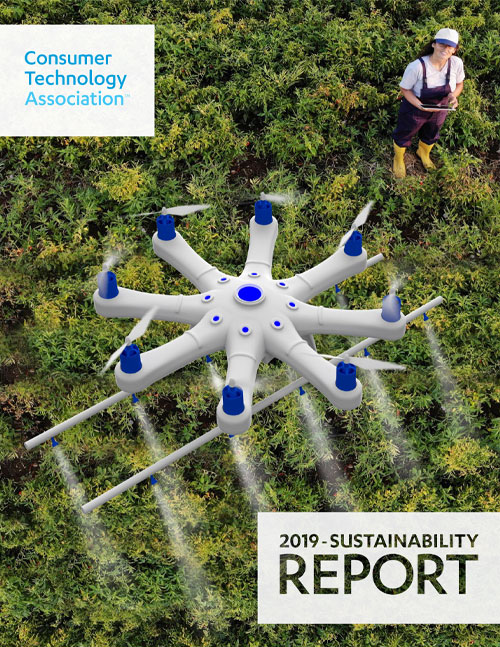A New Generation of Energy-
and Resource-Efficient Products
As consumer awareness about the environmental impact of their technological choices continues to expand, the solutions are ramping up as well. For the consumer technology sector, this collision of urgency, a wider suite of solutions and a growing consumer appetite for sustainable actions has led to ambitious and multipronged efforts to drive energy and resource efficiency across all products.
Sony
Given the popularity of video games, Sony knew it could make a big difference focusing on how to make its top bestseller, the PlayStation, the most energy efficient it could be. With more than 300 million units sold globally every year, the current PlayStation®4 (PS4®, CUH-2000 Series) has achieved a wide range of improvements including reduced power consumption, which in turn enabled downsizing and weight reduction, leading to an innovative new design. Additionally, power consumption has been reduced by 34% compared to the initial CUH-1000 Series, and by 28% when compared to the previous CUH-1200 Series. Finally, the weight of the PS4 has been reduced by 16% and size by 30% compared to earlier models, translating into fewer resource inputs, less packaging and reduced energy required for shipping.

Energy-efficiency policies and programs depend on having a current, consensus standard test method for measuring power draw. CTA is developing a consensus standard for measuring power consumption for several categories of audio/visual (A/V) products, including amplifiers, smart speakers and soundbars. The “CTA-2084” test method standard will support the revision of the EPA’s Energy Star Audio/Video Specification Version 4.0, and CTA-2084 ultimately will be an ANSI consensus standard. Current participants include industry and energy-efficiency advocates, testing labs and regulatory agencies.
Samsung
Over the last two decades, there has been a dramatic improvement in the energy efficiency of TVs. Even as models have grown in size, capability and features, a recent CTA study found that the average LCD TV in 2015 consumed 76% less energy per screen area than the average TV did in 2003. Samsung’s line of energy-efficient TVs continues that trend with the new 75-inch LCD TV, the UE75NU7100, featuring Eco Sensor, which can intelligently adapt its picture according to the intensity of the light in the room. This technology measures the amount of existing light and automatically adjusts the brightness of the image on the TV, saving energy. The model has achieved an EU Energy Efficiency rating of A+, the highest possible.

Intel & Sharp
Finally, Intel is working to enable all-day battery life by co-engineering the new Intel Low Power Display Technology (LPDT), featured in a 1-watt panel manufactured by Sharp and Innolux, which can cut LCD power consumption by half. Cutting power consumption by a watt could extend battery life by four to eight hours. According to Intel, the new technology is expected to deliver up to eight hours of additional local video playback – and up to 28 hours of battery life on select laptops.

